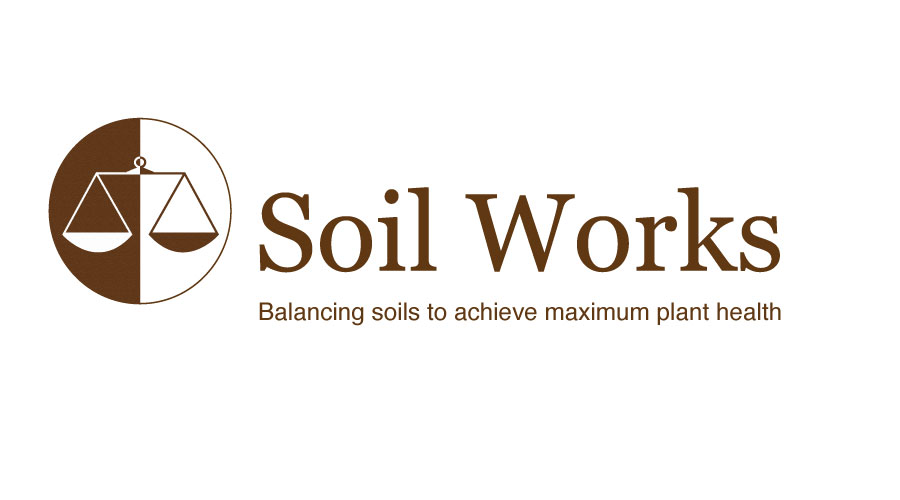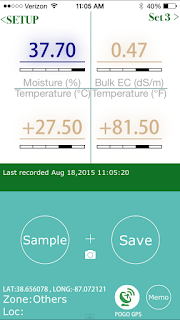The Process of Balancing Soil
Previously we discussed the importance of balancing
soil inputs of carbon and nitrogen in maintaining a consistent return of plant residues
into the soil profile, along with regulating the rate of soil organic matter
decomposition by microbes. Maintaining the mutualistic relationship between
plants and biology is critical to achieving a balanced soil environment and
ultimately maximizing plant health. What I would like to do now is define the
basic process of balancing soils by first identifying specific action steps, and
then identify specific products that can help support those actions.
1.
Evaluation
– Chemical, Physical and Biological Parameters
·
Chemically evaluate soils for accessibility (soil test), availability (paste
extract) and mobility (tissue test) of plant essential nutrients. Additional parameters are TSOC (total soil organic carbon) and carbon to nitrogen ratio.
·
Physical evaluation of soil structure,
texture, and % organic matter (humus) - Saturated Hydraulic Conductivity (infiltration rates) http://www.turfdiag.com/ plays a critical role in maintaining a balanced soil and is directly impacted by these three soil parameters.
·
Biological evaluation of plant biomass (rooting, thatch and shoot density),
soil biological function and sustainability. The Solvita CO2 Burst Test https://solvita.com provides the opportuninity to measure soil biological activity - respiration.
·
Continually monitor and remediate as
needed any excessive accumulation of bicarbonates and sodium in the soil
profile.
2.
Chemical
Balancing with
Inorganic Foundation Minerals
·
Utilize granular and liquid applied
minerals to balance base cation nutrients (Ca, Mg, K, Na, and H). Insure a
sufficient supply of phosphorus, sulfur and adequate availability of trace elements.
3.
Maintain
Adequate Soil and Plant Energy
·
Both soil microbes and plants need
sufficient nitrogen (proteins) to sustain growth and return residues to the
soil profile.
·
Adjust soil applications of synthetic
nitrogen relative to the amount of active organic matter present in the soil.
Foliar applications of nitrogen should be carefully adjusted to maintain plant health with only a
minimal amount of tissue growth.
·
Synthetic sources of nitrogen are less
dependent on biological activity and quicker to provide the desired plant
response.
4.
Build
a Supply of Stable Soil Organic Carbon
·
The controlled decomposition of soil
organic matter provides a stable source of carbon, nitrogen and other plant
essential minerals. Both carbon (carbohydrates) and nitrogen (proteins) provide
microbes with food and energy for sustainability, as well as the ability to
build new cells and grow.
·
When active soil organic matter is
depleted, exogenous applications of soil stable carbon is necessary to maintain
biological stability. These carbon sources can come from humic substances (i.e.
humin, humic acid, and fulvic acid) or non-humic substances (i.e. amino acids,
proteins, starches and sugars).
·
The ideal soil carbon to nitrogen ratio
that favors the controlled decomposition of organic matter by microorganisms is
20:1.
5.
Biological
Enhancement
·
Bio supplementation with Holganix can
speed up the process of achieving a balanced diverse population of beneficial
soil microorganisms.
·
The limiting factors for sustaining a
biologically active soil are maintaining favorable environmental conditions and adequate
food sources (active soil organic matter – carbon, nitrogen, hydrogen and
oxygen).
6.
Increase
Saturated Hydraulic Conductivity of Sand Profile Greens
·
The key to increasing infiltration rates
in sand-based profiles is enhancing the selective process of lignin
degradation.
·
Lignocellulose is the essential part of
cell walls of plants and is one of the most abundant organic sources.
Lignocellulose is composed primarily of cellulose (24-54%), hemicellulose
(11-38%), and lignin (6-31%).
·
The presence of lignin in plant cell walls
(lignocellulose) restricts microbial degradation mechanisms. Lignin limits the
accessibility of existing microbial degraders to more biodegradable plant
materials, such as cellulose and hemicelluloses. When this occurs, the rate of
organic matter inputs can exceed microbial degradation resulting in an
accumulation of non-biodegradable organic matter within the rhizosphere. In
addition, when the breakdown of cellulose and hemicellulose into sugar is
restricted, access to available energy (organic carbon) from the potential
fermentation process is reduced.
·
It is the gradual accumulation of these
recalcitrant forms of organic matter that have greatly reduced the
functionality of USGA and modified sand-based green profiles over the years. It
becomes dramatically more intense when dealing with the Ultra-Dwarf Bermuda
plants, due to their inherent higher content of lignin in cell walls. USGA greens were not designed to optimize surface drainage, so when infiltration rates go from 6"/hour to .5"/hour in a span of 20 years, there in lies the problem. This then becomes a greater issue when irrigation water quality is challenged.
·
Aggressive core aerification and other
cultural activities can provide a short-term enhancement of infiltration rates,
but it is highly disruptive to the soil biomass (roots and beneficial biology),
deleteriously impacting the biodegradation process – especially
detrimental to maintaining important soil fungi populations.
·
There is some hope in being able to cost effectively utilize lignolytic
enzymes which have been shown to selectively breakdown lignin in sand based profiles. These particular
enzymes are gaining momentum due to their role in bioenergy production (i.e. bioethanol), which would increase their eventual availability.
The above outlined process is the road map in
achieving a balanced soil and ultimately maximizing plant health. Many of our
high profile soils today are severely challenged from a combination of
excessive use of synthetic nitrogen fertilizers, aggressive cultural activities
and reduced quality irrigation water. The end result is we have soils that are
severely depleted in both active and passive organic matter, reducing the
ability of the soil to support a balanced biologically active population of
beneficial microorganisms. Without the support of soil biology, plant health is
at risk from both reduced nutrient and water access, as well as exposure to
pathogens and parasites. When both the carbon and nitrogen
cycle breakdown, the entire soil food web is in jeopardy and soils are no longer working for
us.















